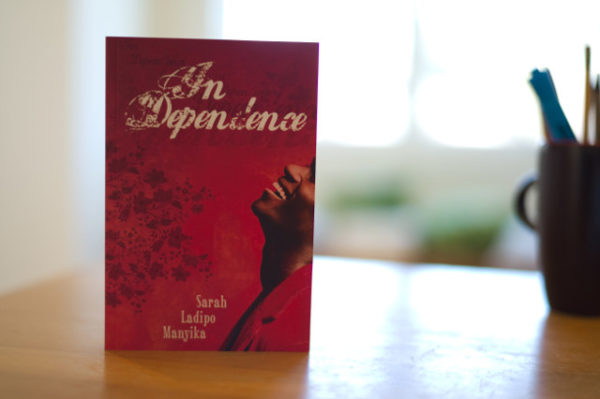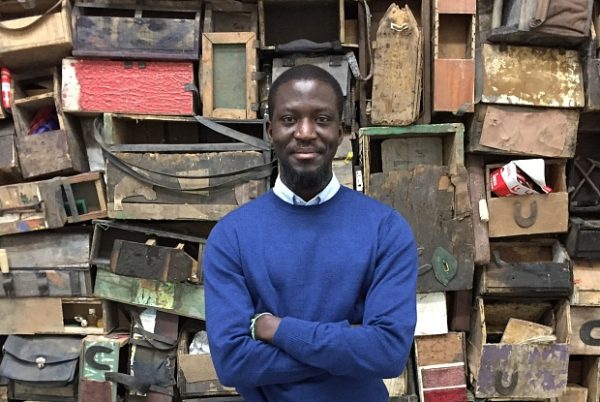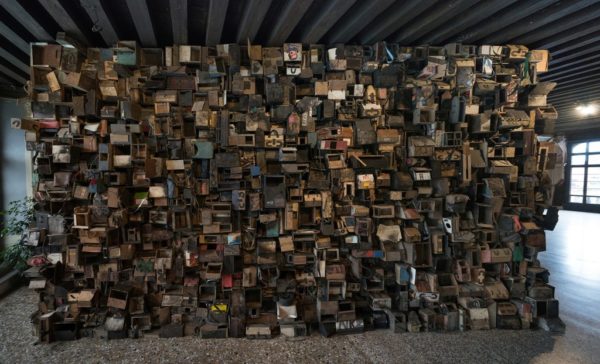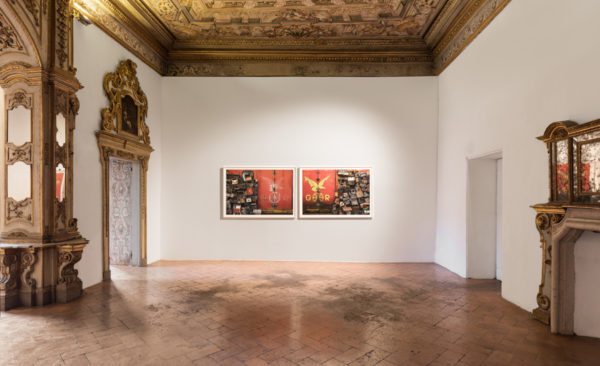
Ghanaian artist Ibrahim Mahama has named his exhibition in Italy after Sarah Ladipo Manyika’s first novel, In Dependence, published in 2008. Mahama’s exhibition, held in Apalazzo Gallery, Brescia, is an assemblage of sculpture and boxes which focus on material history “attests to the daily labour of the dispossessed rural workers who migrate to Accra, and the role they play within the local economy.” A feature in Frieze points out its connection to Manyika’s work:
But, by calling his exhibition ‘In Dependence’ (after the title of a 2008 book by Nigerian novelist Sarah Ladipo Manyika), Mahama also reflects on his own position as an artist relying on anonymous, collective work to produce a high-end commodity.
As at November of last year, In Dependence, notes a profile in The New York Times, has sold more than 1.7 million copies in Nigeria, chiefly due to its inclusion in examination reading lists in the country and the piracy-defeating tactics of its publisher Cassava Republic.

Here is a description of the novel from Amazon:
It is the early-sixties when a young Tayo Ajayi sails to England from Nigeria to take up a scholarship at Oxford University. In this city of dreaming spires, he finds himself among a generation high on visions of a new and better world. The whole world seems ablaze with change: independence at home, the Civil Rights movement and the first tremors of cultural and sexual revolutions. It is then that Tayo meets Vanessa Richardson, the beautiful daughter of an ex-colonial officer. “In Dependence” is Tayo and Vanessa’s story of a brave but bittersweet love affair. It is the story of two people struggling to find themselves and each other a story of passion and idealism, courage and betrayal, and the universal desire to fall, madly, deeply, in love.
Manyika, who is Books Editor at OZY, currently has her acclaimed second novel, Like a Mule Bringing Ice Cream to the Sun, on the shortlist of the 2018 California Book Awards, in the fiction category.


The Frieze feature explains the concepts employed by Ibrahim Mahama:
Assemblage is the act of bringing together a group of things or people; or, as Gilles Deleuze and Félix Guattari describe it in their book A Thousand Plateaus (1980), the social sphere’s ever-changing patchwork of relations and material conditions. The Ghanaian artist Ibrahim Mahama’s work engages with all three definitions. His Non-Orientable Nkansa II (2017) – a towering sculpture installed in Apalazzo Gallery’s lavish, vaulted salon – is made of hundreds of shoe-shining boxes assembled with leftover materials and customized with small stickers, collages and name tags. The artist collected the boxes in Ghana, either by exchanging new for used ones or by commissioning them from a network of ‘collaborators’, to use his definition. The sculpture’s title references one of them, Nkansa, and his ‘non-orientable’ attitude: his antagonism towards investing time and resources in the production of an art object that is apparently devoid of function and meaning. By focusing on the material history of the boxes, Mahama creates a monumental structure that attests to the daily labour of the dispossessed rural workers who migrate to Accra, and the role they play within the local economy.

Read more about the In Dependence exhibition HERE.









COMMENTS -
Reader Interactions